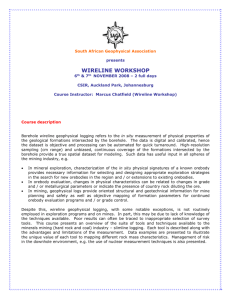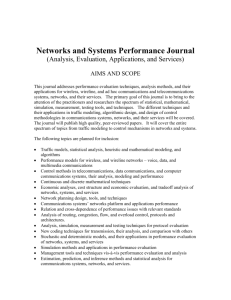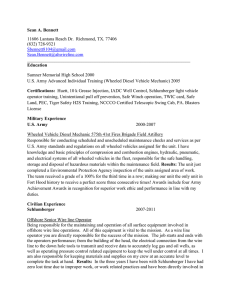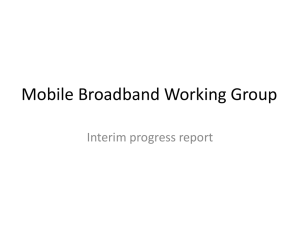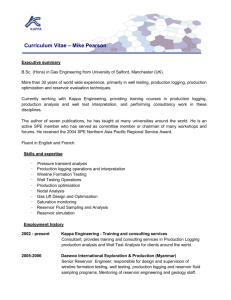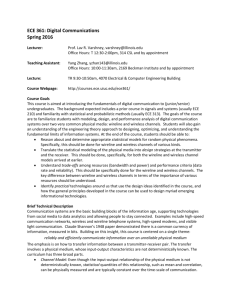ISEN 689_701 Project Proposal Loss of wireline logging equipment Prevention System
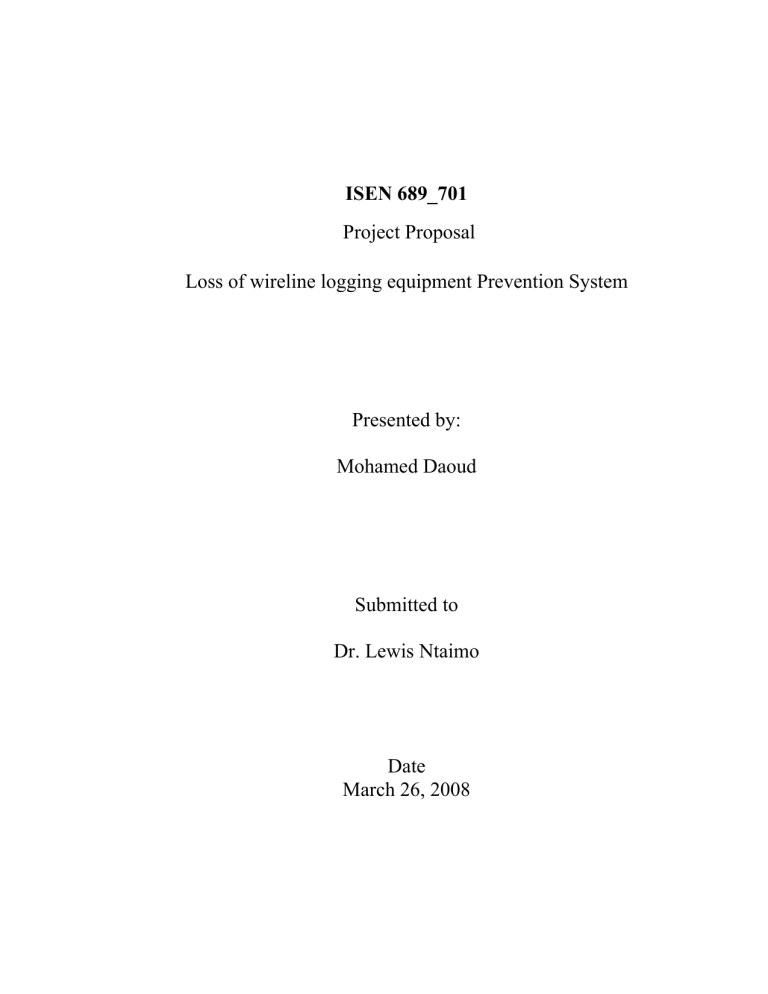
ISEN 689_701
Project Proposal
Loss of wireline logging equipment Prevention System
Presented by:
Mohamed Daoud
Submitted to
Dr. Lewis Ntaimo
Date
March 26, 2008
Introduction
Oil companies seek to reduce the uncertainty of developing and producing an exploration field. To do so, they call on logging
1
services companies to evaluate the reservoir by running electronic sensors in the drilled wells. Running those advanced & rather expensive equipment requires extensive training for the field Engineers responsible of gathering the data for the customer. This training lasts several months in a similar – but controlled – environment. During their training, they are required to run the equipment in the training facility test wells, but because of their inexperience in this field they run the risk of losing the equipment in the test well.
The proposed system currently does not exist in the oil services industry & aims to eliminate the occurrence of such an expensive disaster.
Problem definition
Wireline equipments are run in the depth of a test well in the training facility through a conveyance system using 2 sheave wheels
2
laid about 100 ft. apart as shown in figure 1.
The conveyance system consists of 2 sections: the wireline
3
& the cablehead
4
connected by a torpedo
5
. To determine the depth of the equipment, the wireline is also run through an encoder
6 that interfaces with a controller board within a data acquisition panel. If this torpedo involuntarily hits the top sheave on the way out of the hole, the wireline snaps & the logging equipment fall under the effect of gravity either in the deep hole again (5000
+ ft) or on the surface of the drilling floor
7
where the crews are standing.
Hitting the top sheave is a rare occurrence and mostly would be due to one or more of the following conditions:
•
Human error: o The hoist man
8
is not present in front of the winch to monitor the encoder reading. o The hoist man fails to follow standard procedures while the equipments are conveyed out of the well. o The hoist man fails to follow standard procedure before running the equipment in the test well.
•
Electrical malfunction: o The encoder malfunctions. o The interface board malfunctions.
Needs Analysis
The current system requires the hoist man to be present and alert at all times during the conveyance of the logging equipment in and out of the well. This is not always possible especially in training environment where trainees are not fully competent yet. The cost of non-conformance ranges from the loss of logging equipment that cost around $ 1M to the loss of life of any of the crew members standing on the rig floor. Therefore, designing a system that eliminates the possibility of such an occurrence is virtually priceless, especially if it leads to saving someone’s life.
Overview of the proposed system
The newly-proposed system will involve the interaction of several components; software, hydraulic system, computer system, as well as electrical & motion sensors. The outcome desired would be to stop the conveyance system within 5 seconds if any of the following cases is valid:
•
No one present in front of the hoist.
•
The torpedo is out of the drilled well.
•
Communication with encoder interface board is lost.
Summary
A safety system is needed to prevent the loss of logging equipment in the drilled wells or the of human life if the current industry standards safety systems fail to deploy, especially in a training environment where trainees are less familiar with the operation of such safety devices.
Glossary
1.
Logging
1
: Oil services term means the acquisition of data to evaluate the rock formation in a drilled well to explore the presence of hydrocarbons in that formation.
2.
Sheave wheels
2
: 2 larges pulleys to guide the wireline conveying the logging equipment in & out of the well.
3.
wireline
3
: Oil services industry term to refer to the heavy-duty cable that conveys the logging equipment in & out the drilled well. Inside the wireline there are 7 electrical conductors to transfers the signals form the downhole sensors to the surface acquisition system.
4.
Cablehead
4
: Portion of the wireline that is electrically & physically connected to the downhole logging equipment.
5.
torpedo
5
: the mechanical device that interfaces the wireline to the cablehead. It is larger than the wireline & would not pass through the sheave wheel, which would lead to snapping the strands of the wireline.
6.
encoder
6
: An electrical device mounted on a measuring wheel that turns. The number of turns of the measuring wheel is proportional to the number of pulses generated by the encoder. Those encoder pulses are counted by a computer system to determine the depth of the logging equipment.
7.
Drilling floor
7 well head
8.
Hoist man
9
8
: The portion of the drilling rig where the crews are standing to. The
is usually at the level of the drilling floor.
: is the driver of the winch controlling the drum
10
on which the wireline is spooled.
9.
Well head
9
: The entry point of the drilled well, where downhole equipment are assembled or disassembled.
10.
Drum
10
: A large hydraulic pulley on which the wireline is wrapped.
Surface system
Depth in
Acquisition
Panel Logging data in
Dru m
Encoder
Sheave-wheels
Torpedo
Figure 1
